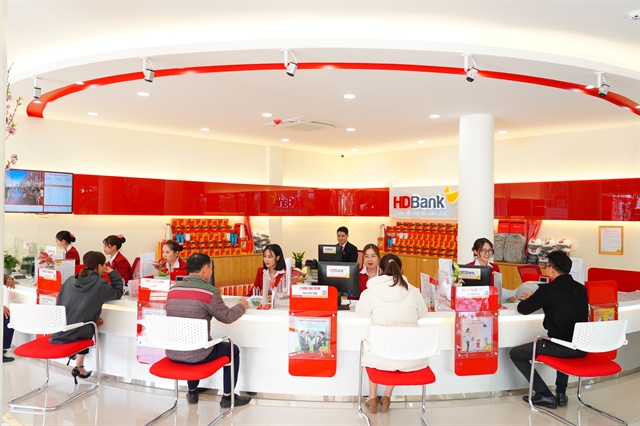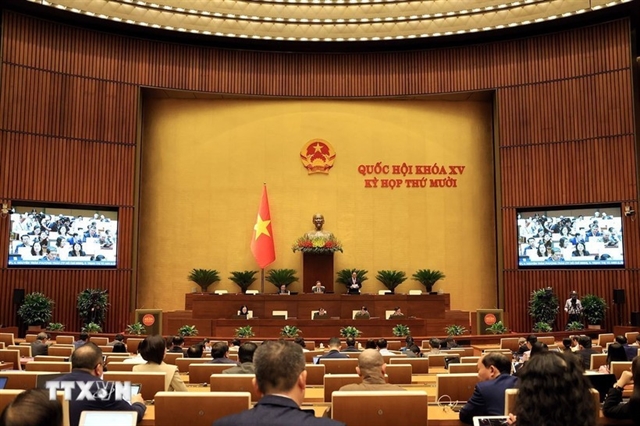 Economy
Economy


|
| Customers at an HDBank branch in HCM City. The lender will finalise the list of shareholders entitled to receive the 2022 dividend of 10 per cent in cash on May 30. — Photo courtesy of the bank |
HCM CITY — The Hồ Chí Minh City Development Joint Stock Commercial Bank (HDBank – HOSE: HDB) has announced a resolution by its board of directors to pay a dividend at a rate of 10 per cent in cash for 2022.
Its record date is May 30, with shareholders having their names on the list by that date receiving VNĐ1,000 per share.
The payout is expected to be done on June 12.
Previously, speaking to shareholders at the bank’s first quarter 2023 investor conference, Phạm Văn Đẩu, its CFO, said all efforts have been made to complete procedures quickly so that shareholders could receive the cash dividend as soon as possible, possibly in late May or early June.
The annual general meeting last month approved a cash dividend of 10 per cent and a stock dividend of 15 per cent.
This has been described as a harmonious plan that benefits both investors who think "cash is king" and those who want to receive shares to continue to benefit from the bank’s strong and sustainable increase in value.
In the last 10 years, investors holding HDB shares have achieved a steady return of around 20 per cent a year, outperforming the compounded growth rates of the VNIndex and the VN30 basket.
After the dividend payout in stocks, HDBank's charter capital will increase to VNĐ29.27 trillion (US$1.24 billion).
The high dividend rate is thanks to robust growth last year.
Overcoming the general difficulties plaguing the economy, HDBank achieved pre-tax profits of over VNĐ10.26 trillion ($437.6 million) in 2022, up 27.2 per cent year-on-year and 105 per cent of the target.
The return on equity and return on assets were 23.5 per cent and 2.1 per cent, both higher than in the previous year.
Continuing with the solid growth momentum of 2022, HDBank again exceeded expectations in the first quarter of 2023 with pre-tax profits of VNĐ2.7 trillion ($115.3 million).
Its capital adequacy, bad debt and profitability ratios continued to remain at good levels compared to average industry rates.
Its capital adequacy ratio reached 12.5 per cent, of which tier 1 capital accounted for 10 per cent.
Its consolidated non-performing loans ratio was 1.8 per cent and the standalone rate was 1.5 per cent, low compared to industry averages (around 2.9 per cent as of the end of February 2023).
Operating expenses were effectively managed in Q1, with the expense-to-income ratio being 34.6 per cent, a sharp improvement from the 39.3 per cent rate in 2022. — VNS




